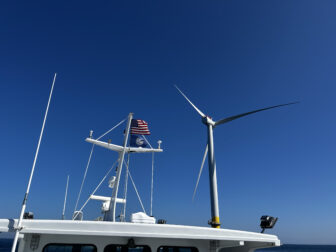On June 13, 2016, a freight train traveling from Philadelphia to Cumberland derailed inside the Howard Street Tunnel next to MICA’s campus. Twelve of the derailed cars were designed to carry liquefied petroleum gas but were thankfully empty at the time. The remaining car that derailed was carrying acetone. The incident took over 24 hours to clear.
At the time of last year’s derailment, I lived just a few blocks away and awoke that morning to numerous alerts about the incident from concerned friends. Knowing that explosive crude oil has traveled this exact route in Baltimore, I was terrified about the potential devastation due to a derailment. Thankfully, there were no injuries or leaks, and most of the cars that derailed were empty. But the incident begs the question, “what if?” What if that train had been carrying explosive crude oil?
Yesterday, residents of Baltimore’s crude oil train blast zone, MICA representatives, Councilwoman Mary Pat Clarke, and labor and environmental advocates rallied to commemorate the 1-year anniversary of this train derailment and to discuss the public health and safety threats posed to Baltimoreans by dangerous crude oil trains.
During the rally, MICA faculty member Valeska Populoh reflected on last year’s derailment: “The incident has raised my concerns about the transport of hazardous materials on these rail lines so close to our campus and the surrounding community, the potential threats to health and safety that these pose, as well as the potential for disruption of traffic and daily life in this central part of Baltimore in the event of another derailment.”

165,000 Baltimoreans live, work, and go to school in the oil train “blast zone” — the area that could be directly impacted if a crude oil train derailed and exploded. Baltimore has had too many close calls with freight trains. In addition to last year’s derailment next to MICA, there was the infamous 2001 derailment in the Howard Street Tunnel, which caused a fire and water main break that effectively shut down the city for a week. In 2013, a freight train exploded in Rosedale and broke windows, shook nearby buildings, and slowed traffic throughout the region. And in 2014, the retaining wall on 26th St collapsed, sending parked cars, streetlights, and large chunks of sidewalk onto the CSX tracks below.
All of these incidents occurred on the route that crude oil trains have been known to take through Baltimore and are examples of just how close Baltimore has come to a catastrophic incident.
During Tuesday’s rally, David McClure, President of the Amalgamated Transit Union Local 1300, said, “Each day our 2,500 MTA workers transport the people of Baltimore to work, school, the doctor, or wherever they need to go. And our riders’ safety is our number one priority. I repeat, it’s our number one priority. And now it’s time for the City Council to put the safety and health of the people first. It’s time to put a stop these trains from carrying dangerous crude oil and other hazardous cargo travelling through these densely-populated neighborhoods before we have a disaster on our hands.”
Ulysses Archie, an urban farmer and community advocate, spoke on Tuesday as a concerned father. He highlighted the forty Baltimore City Public Schools that are located within the blast zone and noted that tens of thousands of children, including his boys, are endangered by crude oil train traffic in the city.
The rally came a few days after members of the Baltimore City Council and Maryland General Assembly toured South Baltimore neighborhoods that are threatened by crude oil train traffic. On Friday, June 9th, community leaders concerned about the potential for a catastrophic explosion led the elected officials on a tour of Mt Winans, Westport, and Curtis Bay and saw some of the most vulnerable points in Baltimore’s infrastructure for a derailment and explosion.

While it is up to the federal government to ultimately ban the transport of crude-by-rail, local and state officials can take steps to protect Marylanders from this public health and safety threat. In Baltimore, the City Council can prevent the construction of new and the expansion of existing crude oil train terminals in order to limit oil train traffic within the city. Port cities across the country have been taking the lead on fighting fossil fuel infrastructure through zoning authority, and Baltimore can too. At the state level, the General Assembly can pass legislation focused on emergency preparedness, transparency, and proof of insurance for crude-by-rail incidents.

CCAN is working hard with our partners in the Baltimore City Council and in the Maryland General Assembly to protect Marylanders from crude-by-rail traffic. Sign the petition to the Baltimore City Council urging action and get involved with our local campaign!






